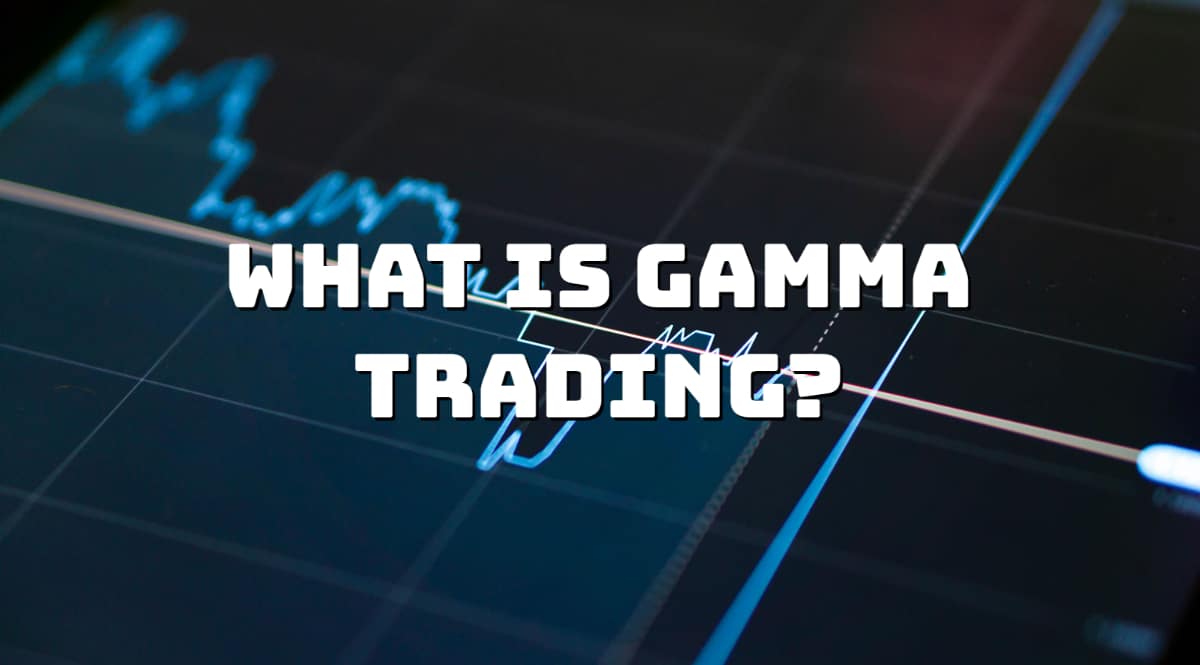What is Gamma trading: Gamma vs. Time – Get Information
Have you ever wondered what Gamma trading entails? Why do so many traders and enthusiasts want to try this form of trading? And why is understanding Gamma so important?
Whether you are new to this type of trading or already have relevant experience, understanding concepts such as gamma trading, long options, short options, gamma measures, and so on will help you master this topic and start generating serious profits from this type of trading.
But before we get to how this type of trading can help you make a profit, let’s first see what gamma trading entails, shall we?
Gamma trading definition – get to know what it is
Gamma, or simply “Γ”, represents a specific fundamental options risk metric that scales the option’s delta sensitivity to movements in the asset’s fundamental price. Delta measures an option’s price change with a one-point shift in the underlying asset.
Gamma gauges how fast an option’s price fluctuates with underlying asset variations, showing higher Gamma means greater volatility.
The Gamma is a vital indicator of convexity in options trading and part of the essential “options Greeks” used to assess risks in options portfolios.
Gamma in options trading
When it comes to Gamma in options trading represents the rate of change in an option’s delta as the stock price declines or moves by one point.
It is a crucial second-order risk factor, also called the “delta of the delta,”, especially for at-the-money contracts like put options and call options. Gamma is highest for options closer to expiration, decreasing as the option moves further away from the money.
Traders use delta-gamma hedging to protect their options positions from adverse movements in the underlying stock price.
What is Gamma utilized for?
Gamma plays a crucial role in helping traders assess how an option’s delta will transform in the near future with movements in the stock price.
While delta indicates the option price change concerning the underlying asset’s price, Gamma provides a more precise view as the stock price moves.
Gamma diminishes and approaches zero as an option becomes deeper in the money, with its delta approaching one.
The highest Gamma is when the option’s strike aligns with the stock price.
Similarly, as an option moves further out of the money, Gamma approaches zero. The highest Gamma occurs when the option’s strike price aligns with the current stock price.
Calculating Gamma can be complex and requires specialized financial software or spreadsheets for accurate results.
A rough approximation of Gamma can be determined by observing the change in delta following a $1 increase in the underlying stock value. This difference in deltas provides an approximate value for Gamma.
Understanding High Gamma in Options Trading
Gamma, the number one derivative of the delta, may also refer to a key metric for traders looking to gauge the price movement of options relative to their financial status. It reveals how the delta changes with shifts in the underlying asset’s price.
For instance, if an option possesses a delta of +40 and a gamma of 10, a $1 increase in the underlying price would boost the option’s delta to +50.
Gamma tends to be small when options are deep in or out of the money, but it reaches its largest value when the option is near or at the money. Additionally, Gamma is higher for options with shorter-term expirations than those with longer-dated expirations.
A brief example of Gamma trading
Gamma is a complex metric, often calculated using specialized software and spreadsheets by traders. For this example, we assume simplified gamma changes.
Suppose an underlying asset is worth $100, with its option having a delta that equals 0.4 and a gamma that equals 0.1 (as a percentage).
In this scenario, for every 10% move in the stock’s price, the delta adjusts by 10%. If the underlying asset’s worth grows by $1, the delta rises to 0.5 (adding the Gamma equals 0.1 to the current delta of 0.4).
Conversely, a 10% decrease in the underlying asset’s price leads to a delta decline to 0.3 (subtracting the Gamma of 0.1 from the current delta of 0.4).
What is High Gamma all about?
High Gamma is particularly significant for options hedging strategies. Portfolio managers or traders dealing with large portfolios sometimes require even more precision in their hedging approaches.
To address this, a third-order derivative called “color” comes into play. Colour measures the rate of change of Gamma and is vital for maintaining a gamma-hedged portfolio.
Gamma trading strategies – get more Information.
Here are the most important Gamma trading strategies you need to know about:
Gamma Long Strategy
The long gamma strategy entails traders benefiting from an increase in the delta of their options position as the underlying asset’s price moves. As the stock price rises, the delta steadily rises; conversely, the delta decreases when the price falls.
By skillfully selling deltas during price increases and buying them during price declines, traders can capitalize on the long-gamma exposure, consistently buying low and selling high. This approach offers the potential for net profits and is a favoured strategy among many options traders.
Gamma hedging strategy
Gamma hedging is a valuable risk mitigation strategy when trading options, particularly when significant stock moves in the opposite direction of your current options position nearing the contract’s expiry date.
For example, if you have profitable call options close to expiration, you can trade put options in a smaller position to protect against unexpected price drops in the short term.
Likewise, you have profitable options below the strike price. In that case, you can take a smaller call option position to guard against potential price increases as the put options approach their expiry date.
Implementing gamma hedging allows traders to reduce exposure to market fluctuations and secure their options portfolio.
Understanding Gamma Risk
Traders holding short gamma positions encounter gamma risk, stemming from price movements in the underlying asset, which can lead to compounding losses. Initiating from a delta-neutral position, as the price of the underlying asset increases, the position turns increasingly short, causing the options to depreciate further.
However, purchasing the deltas at these elevated prices carries the risk of a possible reversal in the underlying asset’s direction, resulting in long deltas during the descent and magnifying the prior losses.
The potential for such cumulative losses emphasizes the significance of gamma risk for traders dealing with short gamma positions, prompting the implementation of meticulous risk management strategies to protect their portfolios.
In this context, gamma risk becomes especially crucial for traders holding short gamma positions in options contracts, particularly when dealing with at-the-money options, as price fluctuations in the underlying asset can significantly impact the value of their options contract.
Bottom line
Gamma trading captures the rate of change in an option’s delta with a single-point shift, serving as a second-order risk factor. It peaks when an option is at the money and decreases as it moves further away from the money.
FAQ: Gamma Trading
What is Gamma trading, and why is it popular?
Gamma trading captures the rate of change in an option’s delta with stock price movements, making it popular among traders seeking profits from asset price shifts.
Why is understanding Gamma essential in options trading?
Gamma provides a precise view of an option’s delta changes with stock price fluctuations, helping traders assess risk and make informed decisions.
How does Gamma vary for in-the-money and out-of-the-money options?
Gamma is highest for at-the-money options and decreases as options move further away from the money.
How does Gamma hedging protect options positions?
Gamma hedging reduces exposure to market fluctuations, safeguarding positions when stock prices move against current options.
What is Gamma risk, and how do traders manage it?
Gamma risk arises from price movements in the underlying asset, leading to compounding losses. Traders manage this risk with careful risk management strategies.
The post What is Gamma trading: Gamma vs. Time – Get Information appeared first on FinanceBrokerage.


































